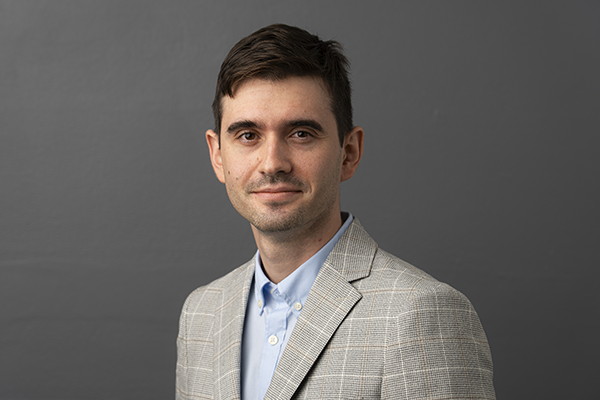Dmitry Postnov
Research leader

Project title
DIABENTIA: Unravelling Microvascular Link Between Diabetes and Dementia – a Pivotal Role of Microvascular Stiffness
What is your project about?
Diabetes and dementia are the leading causes of death in Denmark and worldwide. The most prevalent type 2 diabetes is also known to increase the risk of dementia by more than 50%. In the DIABENTIA project, I propose a hypothesis on the pivotal role of microvascular stiffness in diabetes-associated cognitive decline. I hypothesise that early-stage diabetes can cause an increase in the stiffness of small vessels responsible for regulating the brain's blood flow, leading to a cascade of perfusion disruptions and, consequently, cognitive decline. My group will use a unique combination of imaging technologies to study microvascular stiffness and perfusion disruptions in animal models of type 2 diabetes and Alzheimer’s disease and translate the knowledge to human physiology.
How did you become interested in your particular field of research?
I was always interested in new technology and its application to medical problems. While pursuing a PhD in cardiovascular physiology, I became fascinated by medical imaging, particularly the optical technologies that allow high-resolution, non-invasive imaging of the blood vessels. My excellent colleagues, experts in vascular physiology and neuroscience, inspired me to investigate characteristics of the brain microvasculature that are either overlooked or difficult to assess with existing technologies, such as stiffness. It has defined my research for the past seven years: first, I developed the technology to make non-invasive assessment of microvascular stiffness possible, and now, I apply it to study diseases where it matters – dementia and its primary cardiovascular risk factors – diabetes and hypertension.
What are the scientific challenges and perspectives in your project?
I aim to provide a groundbreaking characterisation of microvasculature in type 2 diabetes and Alzheimer’s disease, for the first time establishing how cerebral microvascular stiffness is altered in these diseases and associated with behavioural markers. Taking it a step further, I plan to enable the transition to human physiology by performing brain and retina imaging in animal models and in patients. At the same time, those aims are linked with physiology, engineering, and data science challenges. A few of the most critical challenges would be interpreting data from animal models and translating it to human physiology, ensuring that microvascular stiffness assessment technology works robustly in clinical settings and establishing the experimental protocols that will allow a direct comparison of brain and retinal microvasculature.
What is your estimate of the impact, which your project may have to society in the long term?
Dementia is a leading cause of death in Denmark and the world, and its incidence keeps increasing, with more than 60 million people suffering from it today. At the same time, almost every 7th person is diagnosed with type 2 diabetes, which increases the risk of dementia and accelerates cognitive decline. With DIABENTIA, we will explore this link and enable the transition from new hypothesis and technology to the actual mechanisms, diagnostics and treatment. In particular, DIABENTIA will allow a breakthrough in understanding the role of microvascular stiffness in diabetes and dementia, which will provide a new treatment target and enable a new diagnostic method based on non-invasive retinal imaging. Therefore, it will become a foundation for large-scale clinical studies, through which we can hopefully learn to predict and prevent the development of cognitive decline in type 2 diabetes patients.
Which impact do you expect the Sapere Aude programme will have on your career as a researcher?
Sapere Aude will allow me to pursue the research area I am fascinated with and reinforce my lab as a leading Danish facility in translational optical blood-flow imaging. Until now, my research has mostly focused on optical imaging methods, technology development and its possible application areas. With Sapere Aude's support, I can move towards studying mechanisms, expand my team with specialists in mathematical modelling and proteomics and establish myself as a hypothesis-driven research leader. It will become a crucial step in my research career, necessary for establishing a permanent at the Department of Clinical Medicine at Aarhus University.
Background and personal life
I have been aiming to become a scientist since a young age, so my personality as a researcher perfectly reflects the person behind the project. I am enthusiastic to learn about new technology and discoveries in many fields, primarily physics, engineering, biology and medicine. I also enjoy teaching students and trying to help them broaden their research perspectives. Although researchers rarely have "free time", when I am not busy with my projects or administration, I watch videos about science (e.g. Veritasium channel on YouTube), read books or play computer games.
View all research leaders here
Research institution
Aarhus University
Research field
Medicine and Biomedical Engineering
City of your current residence
Aarhus
High school
First physics-technology lyceum
